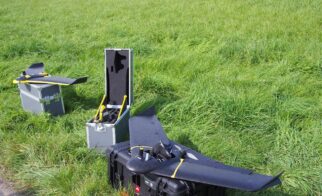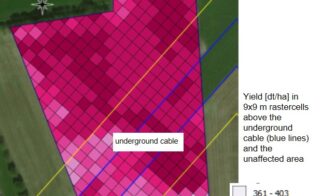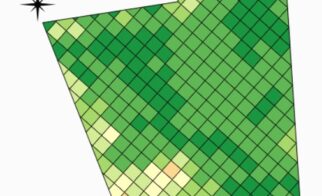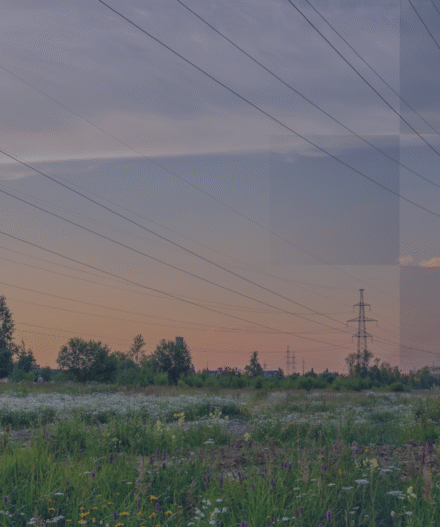To assess how underground cables affect crop yields, near-infrared images taken by drones can be used efficiently to visualise biomass vitality and yield. Amprion has used this technique in a monitoring project in three consecutive years accompanying their underground cable pilot in Raesfeld, North Rhine-Westphalia, Germany.
Highlights
01
Visualises and assesses yields of entire fields along underground cables under agricultural use.
02
Enables long-term use, is minimally invasive and less prone to small-scale heterogeneities in soil properties.
03
Increases knowledge of constructional and operational effects of an underground cable on the yields by repeated monitoring of harvest periods.
Main Information
After converting near-infrared images into the biomass index NDVI (Normalised Difference Vegetation Index), differences in vegetation density and productivity directly above the underground cable and in unaffected areas of a field can be determined precisely. By correlating these results with measured yield values of specific sampling points, extensive yield illustrations of the entire arable field can be generated.
This minimally invasive method does not impair cultivation and harvest significantly, but instead increases the knowledge of cable effects on cultivation and helps to enhance the acceptance among affected farmers, property owners and further stakeholders. The practice is easily transferrable to further high voltage alternating and direct current underground cables and can therefore be of relevance in the priority realisation of HVDC powerlines as underground cables in Germany.
other practices






